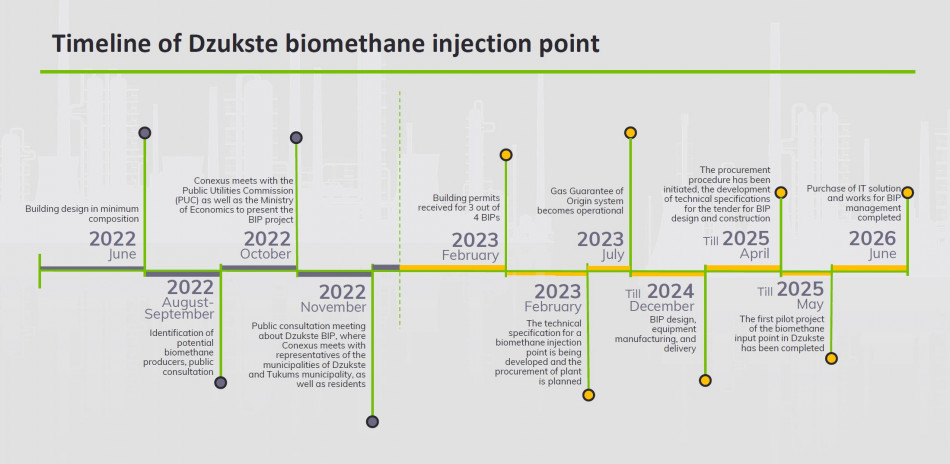Biomethane injection points
Conexus Baltic Grid is developing the first biomethane injection point in the gas transmission system and will provide guarantees of origin for gas produced from renewable energy sources
In order to promote biomethane production in Latvia and ensure its free circulation, Conexus Baltic Grid (hereinafter - Conexus) has developed a u solution, where a smart system will enable biomethane producers whose production facilities are located at a relatively long distance from the gas transmission system, to transport biomethane from the production facility to a biomethane injection point (hereinafter - BIP) in the Conexus system.
Currently, relatively few potential biomethane plants in Latvia are located close to transmission or distribution systems where a direct connection to the system is economically feasible. In order to ensure maximum development of Latvia's biomethane production potential, Conexus is developing an additional solution through the implementation of the so-called "virtual pipeline" concept. This means that the biomethane is transported from the production sites to the BIP entry in the transmission system by the producer via public roads using trucks and high pressure (250-300 bar) methane containers. As required by the Energy Law, the biomethane injection point will be equipped with metering, quality control and remote control equipment for the biomethane injection point, that belongs to the transmission system operator for a safe injection of biomethane into the transmission system.
In 2022, Conexus identified four potential BIPs by analysing data on the location of existing biogas plants and assessing potential biomethane production. Based on this data, Conexus conducted a public consultation, offering stakeholders the opportunity to provide their views on the draft BIP project. Taking into account the interest expressed by stakeholders, Conexus decided to start with the BIP in Dzukste village (Džūkste), eventually evaluation potential for developing the other points based on the experience gained during the operation of the first BIP. The Dzukste BIP could serve up to twenty biomethane producers within a radius of 50 to 60 km.

Figure 1. Location of potential BIPs
The current design of the BIP envisages that the accounting and quality control of biomethane to be injected into the system will take place at the centralized entry point, identifying the supplier, transport and cargo, with the quantity fed into the system being attributed to each specific producer. The quality of the gas at the BIP must comply with the current legal framework on quality for gas entering the system, similar to that for direct connections to the system. Conexus is currently working on a detailed process analysis, assessment and development of the BIP operating principles. At the same time, direct connections to the interconnected gas system remain an option for biomethane producers.
Balancing of the biomethane injected the interconnected system will take place according to the existing balancing rules and principles. It is envisaged that the use of the BMIP will be subject to the same entry tariff as any other entry point to the system.

Figure 2. Timetable for the progress of the BIP project
